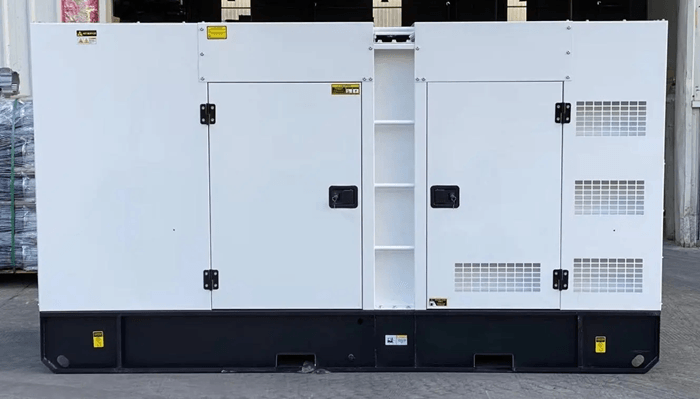Diesel generators are widely used for providing backup power or as the primary source of electricity in areas where grid access is unreliable. One common question that arises is whether the output of a diesel generator is AC (alternating current) or DC (direct current). Understanding the difference between AC and DC current, as well as the diesel generator’s functionality, is crucial for selecting the right generator for your power needs.
AC vs. DC Current
Alternating Current (AC)
Alternating current (AC) is the type of electrical current that is most commonly used in homes, businesses, and industrial applications. In AC, the direction of the electrical current periodically changes. This results in a waveform that alternates between positive and negative values. AC power is efficient for long-distance transmission because the voltage can be easily stepped up or stepped down using transformers. Common examples of devices that use AC include household appliances, office equipment, and most industrial machinery.
Direct Current (DC)
On the other hand, direct current (DC) flows in one direction without changing polarity. DC is the type of electricity typically found in batteries, solar panels, and small electronic devices like smartphones and laptops. Unlike AC, DC is not suitable for long-distance transmission because it is more challenging to step up or step down its voltage efficiently.
Diesel Generator Output
Typical Output
Most diesel generators produce alternating current (AC). This makes them suitable for a wide range of applications, as AC is the standard form of electricity for most residential, commercial, and industrial settings. Diesel generators are often used as backup power sources for homes, businesses, and factories, where AC is needed to power electrical systems and appliances.
Conversion to DC
While diesel generators typically produce AC, there are situations where DC power is required. In such cases, an additional component called a rectifier can be added to the system. A rectifier is an electrical device that converts AC to DC by allowing the current to flow in only one direction. This conversion is commonly needed for applications such as charging batteries, powering certain electronics, and supplying DC power to specialized industrial processes.
Applications and Use Cases
AC Applications
AC power is used in a wide variety of applications, including:
Household appliances: refrigerators, washing machines, air conditioners, and lighting systems.
Office and commercial equipment: computers, printers, and HVAC systems.
Industrial machinery: motors, pumps, and manufacturing equipment.
The ability of AC to be easily transformed into different voltage levels and transmitted over long distances makes it the preferred choice for most residential and industrial applications.
DC Applications
DC power is primarily used in applications where a steady and unidirectional flow of current is required. Some key uses of DC power include:
Battery charging: DC is used to charge lead-acid batteries, lithium-ion batteries, and other energy storage systems.
Electronic devices: Many devices such as laptops, smartphones, and LED lights operate on DC power.
Industrial processes: Certain processes, like electroplating and electrolysis, require DC electricity to operate effectively.
Generator Components
A typical diesel generator consists of two main components: the engine and the alternator.
Engine
The engine, powered by diesel fuel, drives the alternator, converting mechanical energy into electrical energy.
Alternator
The alternator is designed to produce AC electricity. It does this by rotating a magnetic field within conductive coils, inducing an electric current. This process generates the alternating current output that powers most electrical systems.
Choosing the Right Generator
When selecting a diesel generator, it’s essential to evaluate whether you need AC or DC power. In most cases, if you require DC, the generator will provide AC, and you will need to incorporate a rectifier.
Assessing Needs
It’s important to assess your specific power requirements. If your primary application involves devices or systems that require AC, such as HVAC units or industrial machinery, then an AC generator is the right choice. If your application involves battery charging or running DC-powered equipment, you may need to add a rectifier to convert the AC output into DC.
Consulting Experts
For specialized applications, consulting with an expert or manufacturer is recommended. They can help you select the appropriate generator and additional components based on your power needs and usage scenario. For instance, if you need both AC and DC power, a hybrid generator system with an integrated rectifier might be the best solution.
Conclusion
In summary, most diesel generators produce alternating current (AC), making them ideal for a wide range of residential, commercial, and industrial applications. If you require direct current (DC), a rectifier can be added to the system to convert the AC output into DC. By understanding the differences between AC and DC, as well as the specific components of a diesel generator, you can make an informed decision when choosing the right generator for your needs. Always consider your power requirements and consult with experts to ensure optimal performance and efficiency.

